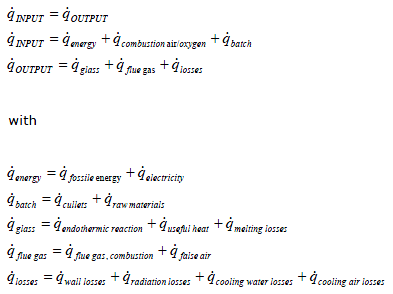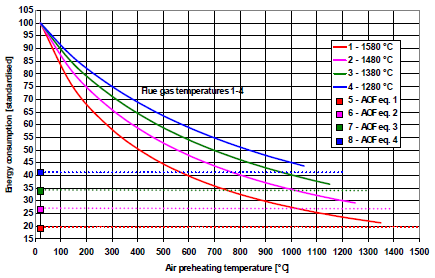|
YIELDWhether you’re looking to simplify your workflow, create a more homogenous melt environment, reduce energy consumption or increase adaptability to meet individual customer demands, the answer always lies in process enhancements. Which is easier said than done. To make an informed decision, you need qualified information. When can you expect a return on your investment? What parameters need to be fine-tuned? What is the medium-term impact of switching from oil to gas? Intelligent software is essential to optimize all parameters involved in the various glass production steps. Investing in a proprietary solution can be time-consuming and expensive. Now there is another way. Glass manufacturers have on-demand access to a Web-based analysis tool that allows them to quickly and easily analyze complex process parameters. YIELD offers rich functionality to make sure you get your glass, ingredients and batch data just right. This 24-hour Web-based tool incorporates all facets of the glass-making process from thermal engineering to operating data analysis. And SSL encryption ensures that all data and queries you enter are totally secure. In a nutshell, our vast glass knowledge base takes the guesswork out of glasswork. Heat & Mass balancesWith the experience on a large variety of furnaces it is possible to forecast possible variations mainly focusing on the fuel consumption, such as:
All these forecasts are based on heat and mass balances according to the most common enunciation of the first law of thermodynamics, that the increase in the internal energy of a thermodynamic system is equal to the amount of heat energy added to the system minus the work done by the system on the surroundings. The overall heat and mass balance of any glass melting furnace can be described as
The accuracy of the forecast is much depending on the base case and the type of variation or forecast respectively, where the base case can be an existing furnace with given data or even a new furnace design with only assumptions. Based on an existing furnace, knowing all input variables, a forecast is very accurate. The fundamental idea behind is that with the given parameters the overall losses, as described above, can be calculated very quickly without evaluating the furnace refractory conditions etc. in detail. Within a specific forecast these losses will not change significantly. Even when the given parameters are not 100% correct, the forecast or trend respectively will be very accurate anyhow. All Oxy-FuelOne of the most popular oxygen applications, all oxy-fuel-fired melting eliminates the need for a combustion air or heat-recovery device. This process is one of the most efficient ways of reducing nitrogen oxides (NOx) and particulate emissions from glass furnaces. Chart: Energy consumption of air fuel and oxy fuel installations as a function of the flue gas and air preheating temperatures The chart shows the energy consumption of different air fuel and oxy fuel installations as a function of the flue gas and air preheating temperatures i.e. a furnace with a flue gas temperature of 1480 °C and an air preheating temperature of 1000 °C saves 65% (100- 35) of the energy compared to a furnace with no air preheating. When this furnace would be converted to AOF we can count with another 9% (35-26) compared to the furnace with no air preheating or 26% compared to the case of air preheating of 1000 °C. Cullet RatioIt is well known that increasing the cullet ratio reduces the amount of energy required significantly. Assuming a furnace for 300 t/d of typical container glass, per 10% of cullet, the energy consumption can be reduced by about 4-5%. Cullet PreheatingOne way to reduce the energy consumption is to introduce cullet and/or batch preheating. Assuming the same furnace as above with a typical cullet ratio of 60%, per 100 °C, the energy consumption can be reduced by about 2-3%. Water content in the batchWater in the cullet is typically introduced to the batch to prevent from carry over with typical volumes of 2-3%. Per 1% of water less in the batch, the energy consumption can be reduced by about 1,5%. False AirFalse air is not wanted, but always involved. False air has a very important influence on the energy consumption. 1% less oxygen content in the flue gas results in 6,0% of energy savings. With Online Glass Engineering, glass factories are provided with a perfect program to execute various kinds of calculations any time, whenever needed or required to check profitability, potential of optimization or amortization of planned investments. The variations are unlimited and allow the glass producer to determine the optimum solution tailored to his specific furnace (melting process). Your AdvantagesThe Online Glass Engineering Program is an all-in-one solution. This means huge transparency for glass producers as all modules are mutually compatible. It is also available at any time and from any place. Highly favorable conditions make it the most economic way for glass producers to reduce costs and optimize processes. An experienced support team of glass engineers is also permanently available. Online Glass Engineering...gives you transparent insights that translate into an immediate advantage. To give you an idea of how your business can profit from more transparency, you have the option of a free trial for three weeks. Register now for your free trial or ask our team for personal support. |
Login for Members
Please type your email and your password into the boxes below and click to login. Register
Take a test-run today“Glass engineering on demand” gives glass manufacturers the transparency they need to systematically optimize their production processes. Get your free trial access for three weeks. YIELD
|
PREMIUM
|

 deutsch
deutsch english
english chinese
chinese russian
russian

